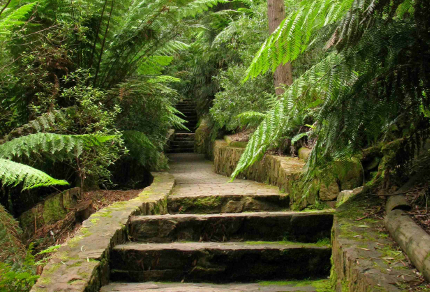In cool air under cloudy skies, I set out early to explore Canberra, strolling past galahs that perched like pink and grey blossoms above deep red roses in a mini-park, and then on to Sullivan’s Creek and its adjoining parks with their shade trees and neat plantations of pines, cedars, larches and Lombardi poplars. A black-faced cuckoo-shrike mobbed an Australian raven atop a street light, and a pair of crimson rosellas foraged on an overgrown lawn. A red wattlebird bashed a clear-winged insect against a branch, and a nearby mixed flock of sulphur-crested cockatoos, little corellas, crested pigeons, plus an eastern rosella collected grit from a patch of gravel beneath a pine tree, the corellas’ white plumages stained brown with soil. Tinkling songs attracted me to a flock of yellow-rumped thornbills foraging beneath a an open copse of pines.
After two hours of birding, I left the creek and popped into the Ecological Society of Australia meeting at the Australian National University campus to listen to a plenary lecture Then I zig-zagged southwest through the campus and across Clunes Ross Street to the Australian National Botanic Gardens. I quickly discovered that the gardens were the largest I had encountered in Australia and consisted of a myriad of plantings of native species (about a third of the country’s total) of various taxonomic groups – the genera Acacia, Callitris, Casuarina, Hakea, Grevillea and families Myrtaceae, Fabaceae, Rutaceae, Lamiaceae, Proteacea, Asteraceae – as well as more ecologically-oriented units such as the rock garden, rainforest gully, eastern and western mallee plant associations, and Sydney region flora. All these were backed by native, eucalypt-dominated bush cloaking the eastern base of Black Mountain.
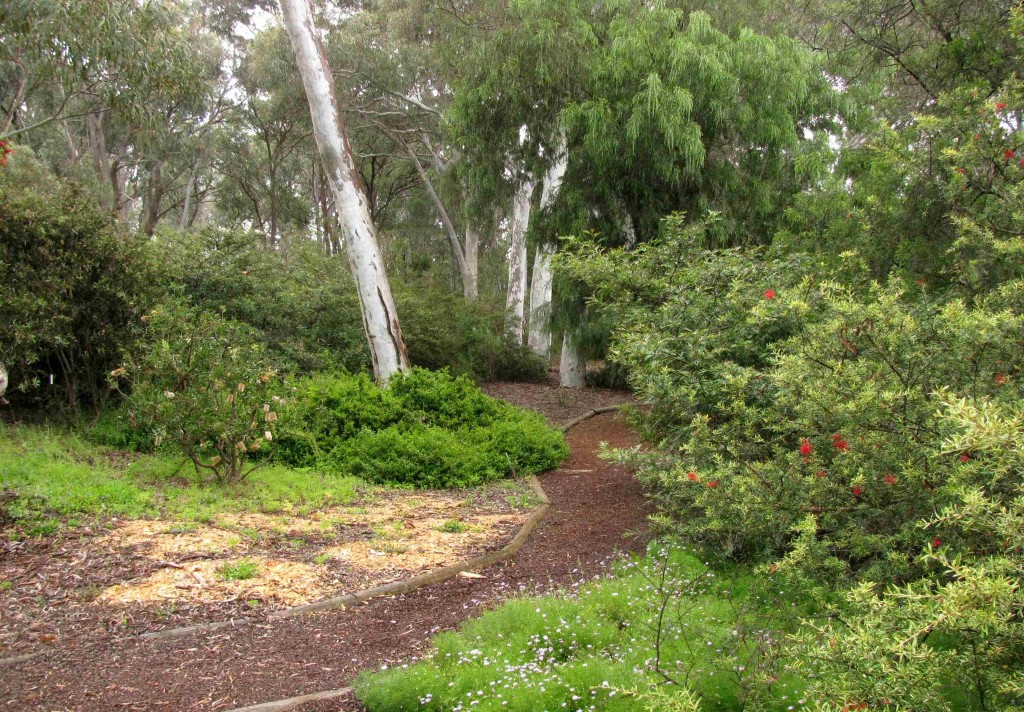
Australian National Botanic Gardens, Canberra (© Magi Nams)
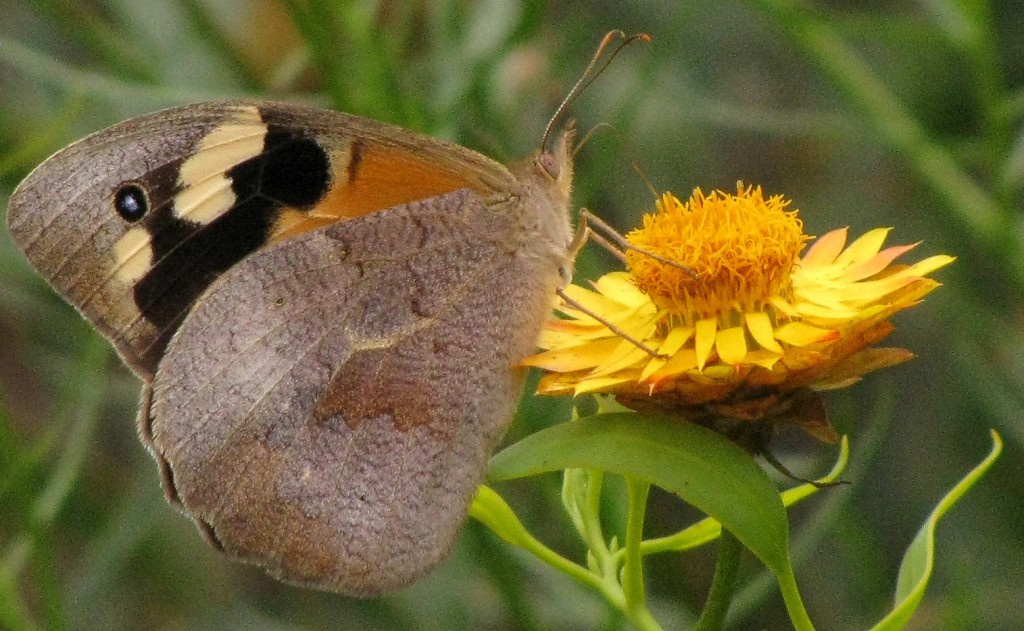
Female Common Brown (© Magi Nams)
The gardens were a mecca for wildlife, with flowering shrubs attracting New Holland honeyeaters, red wattlebirds, eastern spinebills, and wafting flotillas of butterflies I later identified as male and female common browns. Superb fairy-wrens with perky, cocked tails – the males flaunting brilliant blue and black plumage patterns on their heads and necks – flitted curiously but warily from shrub to shrub. Brown thornbills and a grey fantail flicked tails flirtatiously while fussing in low trees, and water dragons gloriously armoured with spikes and knobs lazed in the sun near a pool, drawing excited exclamations from a class of schoolchildren visiting the gardens.
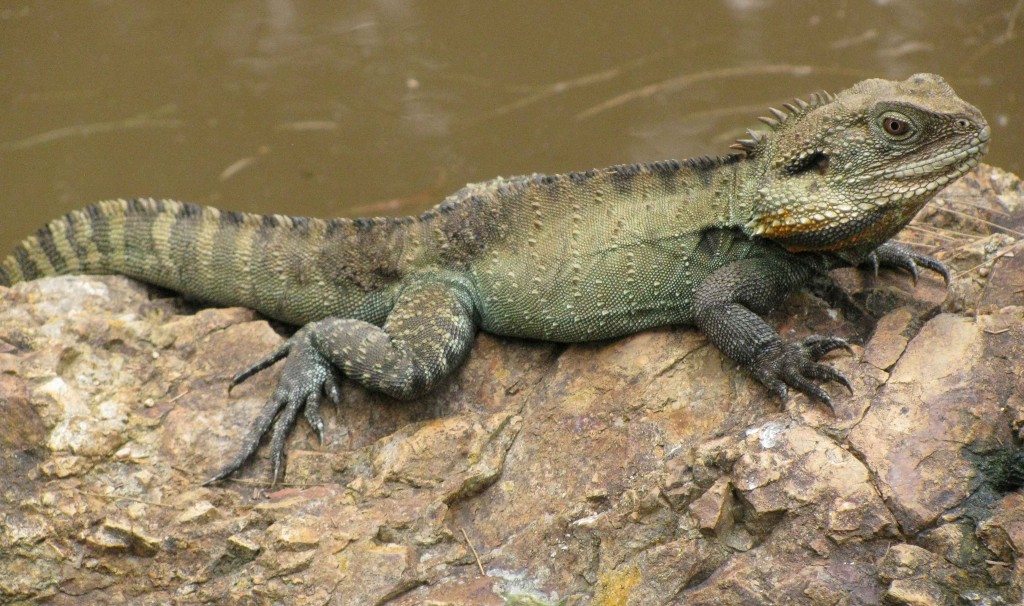
Water Dragon in Australian National Botanic Gardens (© Magi Nams)
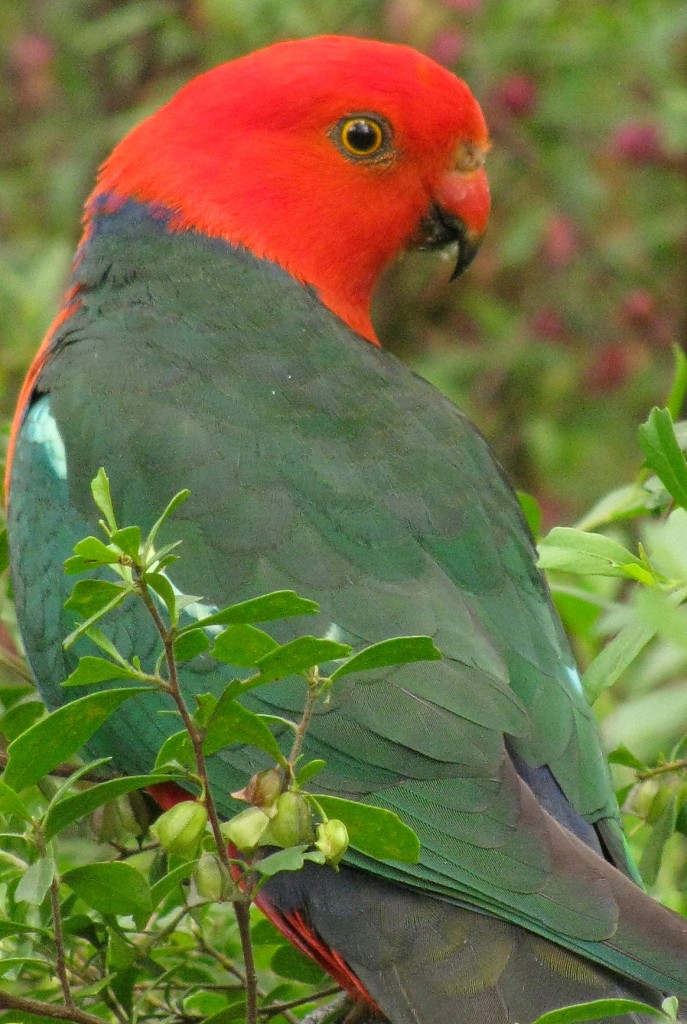
Male Australian King Parrot (© Magi Nams)
A trio of eastern grey kangaroos rested in the dappled shade of shrubs, hopping away at my approach near their peaceful hideaway. Crimson rosellas flew through the gardens like fire and ice on the wing, and male and female Australian king parrots – the males possessing vivid scarlet heads and necks – eyed me curiously while foraging in leafy shrubs. I spotted a white-throated tree creeper climbing and pecking its way up a ragged-barked gum tree, and a male common bronzewing strolling over the leaf litter in an Acacia planting, the bronzewing’s delicate pink-grey breast a soft contrast to its iridescent green-gold wing patches. I haunted the eucalypt lawns in search of gang-gang cockatoos, but dipped on that species.
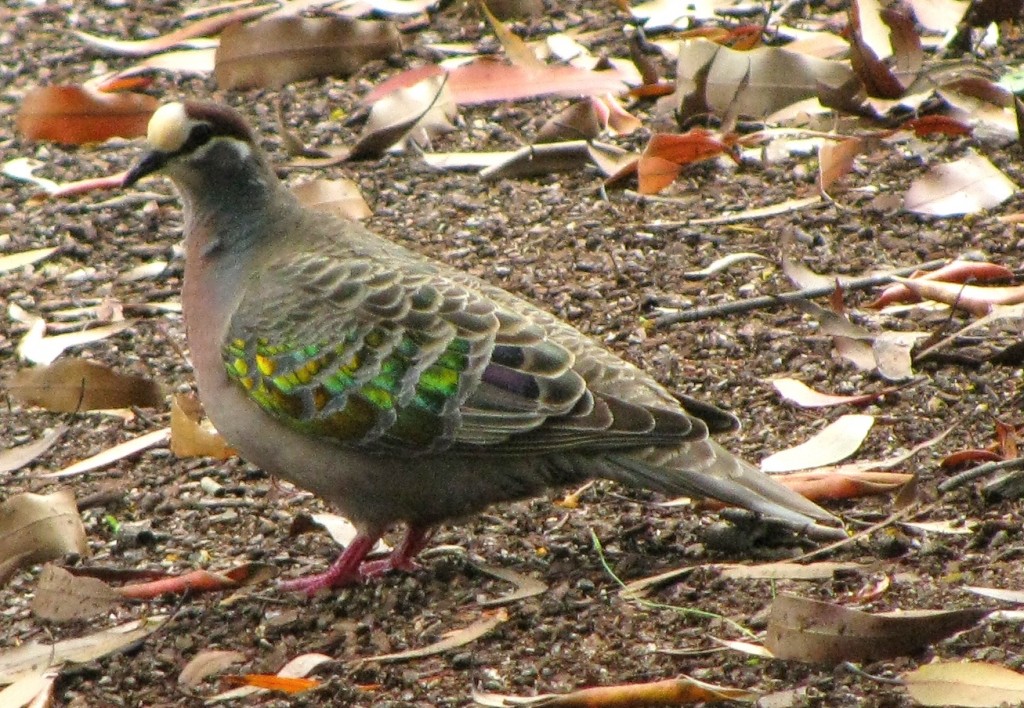
Male Common Bronzewing (© Magi Nams)
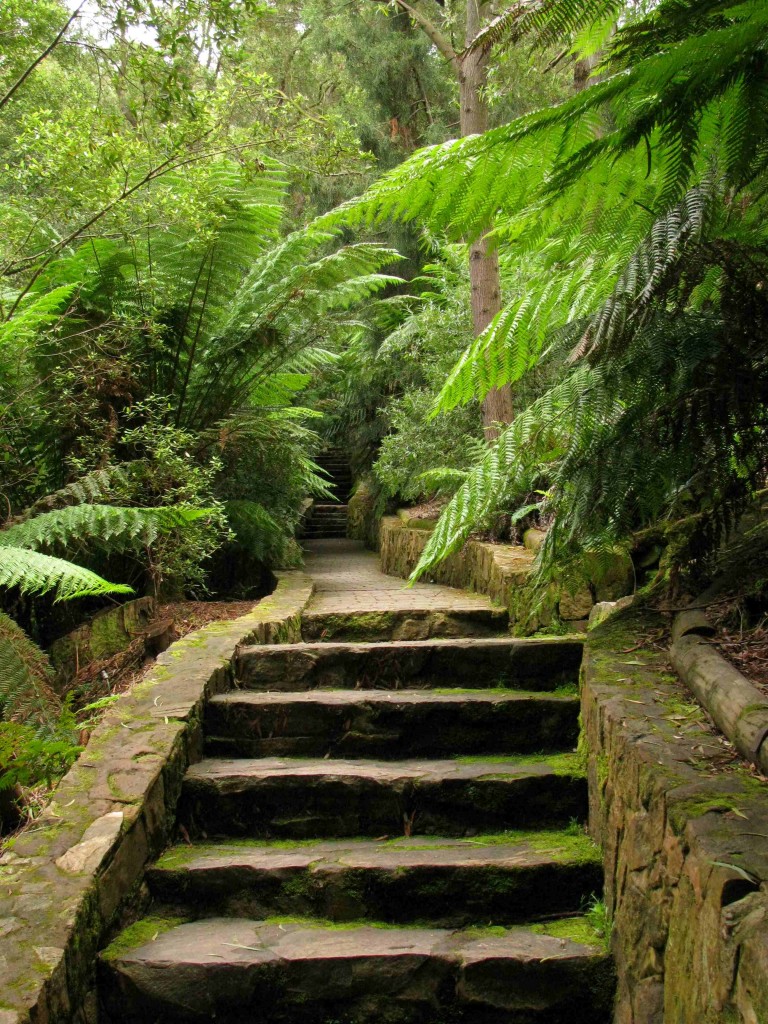
In the Rainforest Gully, Australian National Botanic Gardens (© Magi Nams)
In mid-afternoon, I reluctantly left the gardens – determined to return tomorrow to explore more – and returned to the ANU in time to hear Vilis and his James Cook University colleagues Chris Johnson and Euan Ritchie present four-minute research talks at the Sustaining Biodiversity – the Next 50 Years ecology conference. At the end of the short talks, Dr. Corey Bradshaw of the University of Adelaide presented a plenary lecture titled ‘Heads in the Desert Sand – Why Australians should wake up to the biodiversity crisis.’ From that lecture, I took home three points: 1) a new time period called the Anthropocene has been instituted to describe the interval of environmental history during which humans have been the major cause of extinctions (this period has particular relevance to Australia, which has the highest rate of mammal extinctions in the world), 2) the richer countries are, the more environmental damage they do (again, Australia, which has one of the highest rates of land clearance in the developed world, takes a hit from this one), and 3) Australia, a country with limited supplies of fresh water, is already overpopulated. As I’ve mentioned in previous posts, more than 90% of Australians live in a green fringe of coastal landscapes (particularly along the country’s east and southeast coasts), while few inhabit the vast, arid and semi-arid interior of the continent. Australia is a huge continent, a massive country, but its water supply – and thus its capacity to provide for the basic needs of its population – is limited.
Today’s birds: galahs, pied currawongs, magpie-larks, mynas, crested pigeons, Australian raven, black-faced cuckoo-shrike, Pacific black ducks, silver gulls, Australian magpies, starlings, willie wagtail, laughing kookaburras, white-winged choughs, Australian wood ducks, crimson rosellas, red wattlebirds, sulphur-crested cockatoos, welcome swallows, noisy miners, little corellas, reed warbler, eastern rosella, rock doves, *yellow-rumped thornbills, black swans, superb fairy-wrens, brown thornbills, eastern spinebills, grey fantail, white-browed scrubwrens, Australian king parrots, New Holland honeyeaters, white-throated treecreeper, *common bronzewing, blackbirds. Also, numerous *common browns (butterflies) and water dragons, plus a trio of eastern grey kangaroos. (*lifelist sighting)

